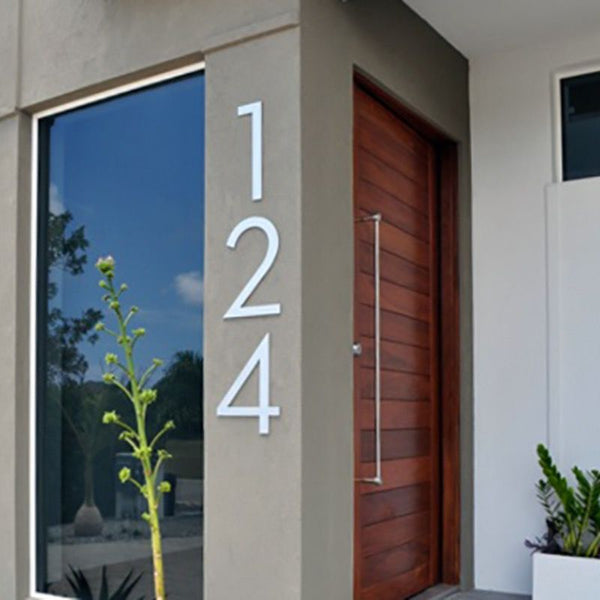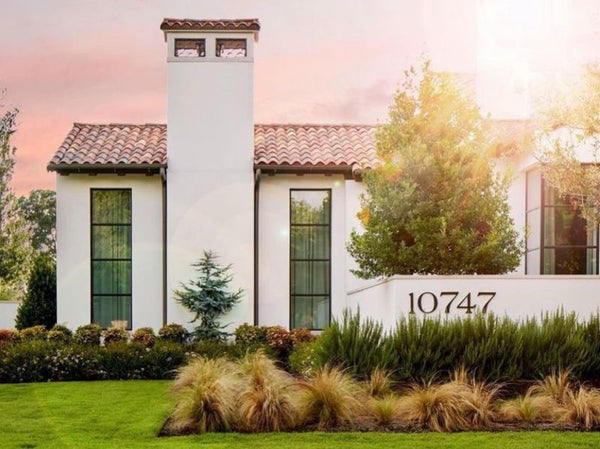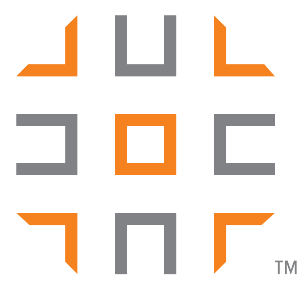
Confusing directions, hard-to-spot buildings, and inconsistent signs can frustrate visitors and cost businesses valuable foot traffic. Poor navigation impacts customer experience and brand trust. Wayfinding and monument signs fix this. They guide people clearly, reinforce brand presence, and add architectural flair. These signs combine function and design similar to commercial signage solutions that enhance visibility and professionalism helping users reach their destination while showcasing the brand in a bold, permanent way.
Let’s understand how wayfinding and monument signage solve real-world navigation problems while upgrading the look and feel of your location, just like trade signage systems designed for modern businesses.
What Are Wayfinding Signs?
Before improving navigation, it's key to understand what wayfinding signs are and how they function in diverse environments. These signs guide people through physical environments. These signs serve to inform, direct, identify, and reassure.

Wayfinding signage includes:
- Directional signs: Point users toward locations (e.g., restrooms, exits, elevators).
- Identification signs: Mark specific rooms or spaces (e.g., "Lobby A", "Suite 201", "Radiology").
- Informational signs: Share relevant details (e.g., maps, business hours, facility layouts).
- Regulatory signs: Show rules or restrictions (e.g., “No Smoking”, “Authorized Personnel Only”).
Each type fulfills a specific role within the navigation hierarchy. When integrated well, they create a frictionless user experience that improves satisfaction and efficiency.

Where Are They Used?
Wayfinding systems are necessary anywhere users must navigate complex or unfamiliar spaces.

Common sectors using wayfinding systems include:
- Hospitals: Guide patients and staff to clinics, labs, and emergency areas.
- Airports: Manage high-volume flows with multilingual and icon-based signs similar to modern restroom plaques that maintain clarity and consistency.
- Shopping malls: Direct customers to stores, restrooms, and exits with custom welcome signs that blend design and direction.
- Corporate offices: Assist employees and visitors in navigating large campuses.
- Universities: Help students and guests find departments, lecture halls, and admin buildings.
- Theme parks: Optimize guest movement between attractions, dining, and rest areas.
The design of each system considers user types, path complexity, and the urgency of movement.
What Are Monument Signs?
Monument signs serve as the physical gateway to a property, combining visibility, style, and permanence. They are ground-level signs installed at entrances to properties or campuses. They blend branding with visibility and durability.

Key Attributes of Monument Signs:
| Feature | Description |
|---|---|
| Height | Typically 3–6 feet tall for clear roadside visibility |
| Materials | Brick, stone, concrete, aluminum, or HDU (High-Density Urethane) |
| Design | Customizable to match architectural styles |
| Purpose | Marks property entrances and reinforces brand identity |
These signs create a visual anchor and a strong first impression. Well-designed monument signs communicate reliability, prestige, and credibility.
Where Are They Installed?
Monument signs are typically positioned at high-traffic entry points where visibility and recognition are critical.

Common installation areas include:
- Corporate headquarters: Reinforce professionalism and guide clients and visitors.
- Retail centers: List tenants and drive foot traffic.
- Religious institutions: Share service times and event messages.
- Medical campuses: Label main entrances and department buildings.
- Educational facilities: Identify main gates and name the institution.
- Gated communities: Enhance prestige and guide deliveries or visitors.
They are often part of a larger branding system that extends to internal signage and landscape architecture.
How Do These Signs Improve Navigation?
Understanding their functional impact highlights how these signs enhance user experience and operational efficiency.
1. They provide immediate orientation.
Users identify their location quickly through clear, readable signs. Large typefaces, strategic placement, and visual cues like arrows or icons make location recognition effortless.
2. They reduce decision-making stress.
In complex buildings or campuses, users face numerous directional choices. Well-placed signs eliminate guesswork and shorten decision time by offering clear guidance at each decision node.
3. They improve accessibility.
Signs following ADA guidelines include braille, tactile surfaces, and high-contrast text. These features ensure usability for visually impaired users, older adults, and individuals with cognitive challenges.
4. They streamline emergency response.
Clear labeling of wings, floors, and rooms aids fire, police, or EMS teams during urgent responses. Time saved through good signage can be life-saving in healthcare or disaster scenarios.
When signs are integrated with maps, QR codes, or mobile wayfinding apps, users get both physical and digital assistance for seamless navigation.

What Makes Effective Wayfinding Design?
Effective design turns signs into intuitive navigation tools. Poorly designed signs confuse rather than guide.
Successful systems rely on legibility, consistency, and spatial logic.
Effective Wayfinding Systems Use:
- Font hierarchy: Primary info in bold, large fonts; secondary info smaller much like the top fonts for modern signage that improve readability and visual appeal.
- Consistent icons and colors: Create an intuitive visual language across multiple buildings or departments.
- Strategic sign placement: Positioned at entrances, junctions, and major decision points.
- Durable materials: UV-resistant, waterproof, and anti-glare finishes for long-term visibility.
- Lighting: Ensures signs are readable in low light or nighttime.
Additional Tip:
Include floor maps near elevators and entrances to provide users with an overview before they start navigating. A smart wayfinding system anticipates user needs and removes friction through proactive design.
Why Combine Monument Signs with Wayfinding Systems?
Pairing both types of signage creates a seamless and memorable user journey from curb to destination.

Cohesive signage boosts navigation and brand impact.
When combined, these sign types:
- Anchor the location with a bold entry statement
- Guide visitors smoothly to their destination
- Reflect brand tone and professionalism
For example, a healthcare campus can use a monument sign at the entrance with hospital branding and color-coded internal wayfinding that matches department zones.
Benefits of integration:
- Unified design language, aligned with the GSA P-100 Facilities Standards, which emphasize cohesive environmental graphics across public buildings for clarity and accessibility
- Easier maintenance across the signage ecosystem
- More professional and trustworthy brand image
This strategic alignment supports user orientation and strengthens brand perception across all touchpoints.
Compliance and Best Practices
Ignoring signage regulations can result in legal consequences, user complaints, or brand damage.
ADA & Local Regulations
Both monument and wayfinding signs must comply with:
- ADA standards: Minimum contrast ratios, tactile characters, braille placement, and mounting height.
- Local zoning laws: Restrictions on height, materials, colors, and illumination levels.
Additional Tips:
- Conduct pre-installation zoning checks with municipal authorities.
- Include compliance audits in the design and planning stages.
- Document all materials and layouts for inspections.
Regulatory adherence ensures legal safety and maximizes sign effectiveness for all users.

Materials, Maintenance, and Lifespan
Material choice directly affects how long a sign remains attractive, legible, and structurally sound.
Durable signage needs the right materials.
| Material | Benefits | Lifespan (avg.) |
|---|---|---|
| Aluminum | Rust-proof, lightweight, sleek | 10+ years |
| HDU | Moldable, weather-resistant | 8–10 years |
| Brick/Stone | Classic, strong visual presence | 15–20+ years |
| Acrylic | Glossy, modern, indoor-friendly | 5–7 years |
Maintenance Tips:
- Clean quarterly with non-abrasive cleaners.
- Repaint or re-coat every few years depending on UV exposure.
- Inspect mounting and lighting annually.
Weather, location, and pollution levels also influence maintenance schedules and sign longevity.
What’s the Average Cost of Wayfinding & Monument Signs?
The more custom, branded, and durable the design, the higher the investment. Price depends on size, materials, lighting, and logos. According to the U.S. General Services Administration (GSA), federal facility signage projects typically allocate between 8% and 12% of total construction costs to environmental graphics and wayfinding systems, depending on scale and complexity. In other words, a $500,000 facility build may dedicate $40,000–$60,000 to signage alone — reinforcing how critical professional design and material selection are to public projects.
Factors impacting cost:
- Material (brick vs. aluminum)
- Size and quantity
- Illumination (LED, solar, backlit)
- Custom branding (logos, colors, finishes)
- Installation complexity
Requesting a full consultation helps define needs, reduce waste, and maximize ROI.
How to Start Your Signage Project?
Success starts with planning. A professional process ensures design intent and user needs stay aligned.
Step-by-step approach:
- Site assessment – Analyze layout, traffic flow, and problem points
- Brand integration – Align typography, colors, and design elements
- Design development – Create mockups and prototypes for review
- Fabrication – Choose materials, production methods, and coatings
- Installation – Ensure code-compliant, safe, and strategic placement
- Maintenance plan – Establish a schedule for cleaning and inspections
Working with signage specialists guarantees compliance, durability, and high visual impact from start to finish.
Clear Signs, Confident Visitors, Stronger Brand
Wayfinding and monument signs create a seamless user journey. They welcome, guide, and impress improving navigation, enhancing user confidence, and reinforcing your brand identity at every step. If you want signs that work beautifully and boost brand trust? Contact Modern House Numbers to plan, design, and install signage that turns first impressions into lasting loyalty.



